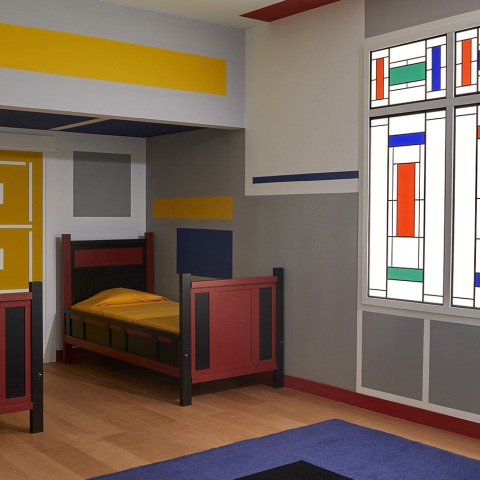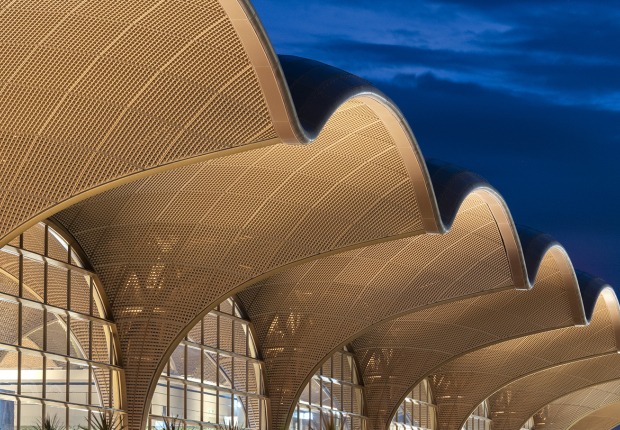Mondrian’s concept of beauty based on the surface, on the structure and composition of color and lines, shaped a novel and innovative style that aimed at breaking down the frontiers between disciplines and surpassing the traditional limits of pictorial space.
De Stijl, the magazine of the same name founded by the architect, painter and critic Theo van Doesburg, was the platform for spreading the ideas of this new art and overcoming traditional Dutch provincialism. The first issue appeared in 1917, and the publication continued to offer information until 1931 on the international development of abstract art. Piet Mondrian, who was born fifteen years before the rest of the members of De Stijl, was the patriarch of the movement.
Contrary to what has often been said, the members of De Stijl did not pursue a utopia but a world where collaboration between all disciplines would make it possible to abolish hierarchies among the arts. These would thus be freed to merge together and give rise to something new, a reality better adapted to the world of modernity that was just starting to be glimpsed.
The artists associated with Mondrian and the magazine De Stijl operated in a world where other artistic developments were under way. Each gallery in the exhibition therefore counterpoises phenomena directly aligned with the key ideas behind De Stijl with other attempts, in the Netherlands and elsewhere, to create an art that could rightly be called contemporary and which was founded in reality – or was even ahead of it. Viewed in this way, the period from the Russian Revolution to the rise of Nazi Germany was a turbulent period in art and culture, a time when the artists of De Stijl managed to steer their own unique and totally new course.


































![Frederick (then Friedrich) Kiesler's City of Space [Raumstadt] debuted at the Exposition des Arts Décoratifs in Paris, 1925 Frederick (then Friedrich) Kiesler's City of Space [Raumstadt] debuted at the Exposition des Arts Décoratifs in Paris, 1925](/sites/default/files/styles/mopis_home_news_category_slider_desktop/public/images-lead/G.jpg?h=5c5ad3f7&itok=2bsigA7w)






